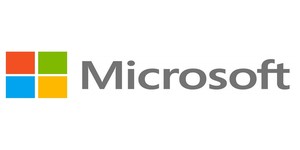
Microsoft has been awarded a patent that gives it control over GPU-assisted video encoding, potentially giving it a big stick to wield over cross-platform implementations.
The freshly-granted patent, first spotted by the guys over at ConceivablyTech, was applied for back in 2004 and seeks to outline the basis of "accelerated video encoding using a graphics processing unit" - a technology that was rare in 2004 but near-ubiquitous now.
The patent's abstract details a system which "allows the GPU to perform a motion estimation process in parallel with the video encoding process performed by the CPU," meaning that "performance of video encoding using such a system is greatly accelerated as compared to encoding using just the CPU."
If such technologies sound familiar, it's because they are: many professional-grade video encoding systems use Nvidia's CUDA or the cross-platform OpenCL languages to offload such massively parallel tasks onto the GPU for a significant speed boost, and such implementations are gradually filtering down to the consumer level.
It's interesting to see that Microsoft is first out of the gate with a patent on this technology: not producing graphics cards itself, it is reliant upon third parties such as AMD and Nivida to make the hardware that its patented technology can use as the basis for its acceleration. Whether that means that the graphics card companies will now need to go cap-in-hand to Microsoft to license the technology remains to be seen.
Although now granted, a patent is only as good as its defence against legal challenges - and with hardware-accelerated video encoding now a commonplace site, it's just a matter of time before a competitor challenges Microsoft's claims in the courts.
Do you believe that Microsoft's 2004 patent application means that it beat competitors to the punch, or has the Patent Office made a mistake in granting a patent for what is now a common technology? Share your thoughts over in the forums.
The freshly-granted patent, first spotted by the guys over at ConceivablyTech, was applied for back in 2004 and seeks to outline the basis of "accelerated video encoding using a graphics processing unit" - a technology that was rare in 2004 but near-ubiquitous now.
The patent's abstract details a system which "allows the GPU to perform a motion estimation process in parallel with the video encoding process performed by the CPU," meaning that "performance of video encoding using such a system is greatly accelerated as compared to encoding using just the CPU."
If such technologies sound familiar, it's because they are: many professional-grade video encoding systems use Nvidia's CUDA or the cross-platform OpenCL languages to offload such massively parallel tasks onto the GPU for a significant speed boost, and such implementations are gradually filtering down to the consumer level.
It's interesting to see that Microsoft is first out of the gate with a patent on this technology: not producing graphics cards itself, it is reliant upon third parties such as AMD and Nivida to make the hardware that its patented technology can use as the basis for its acceleration. Whether that means that the graphics card companies will now need to go cap-in-hand to Microsoft to license the technology remains to be seen.
Although now granted, a patent is only as good as its defence against legal challenges - and with hardware-accelerated video encoding now a commonplace site, it's just a matter of time before a competitor challenges Microsoft's claims in the courts.
Do you believe that Microsoft's 2004 patent application means that it beat competitors to the punch, or has the Patent Office made a mistake in granting a patent for what is now a common technology? Share your thoughts over in the forums.

MSI MPG Velox 100R Chassis Review
October 14 2021 | 15:04








Want to comment? Please log in.